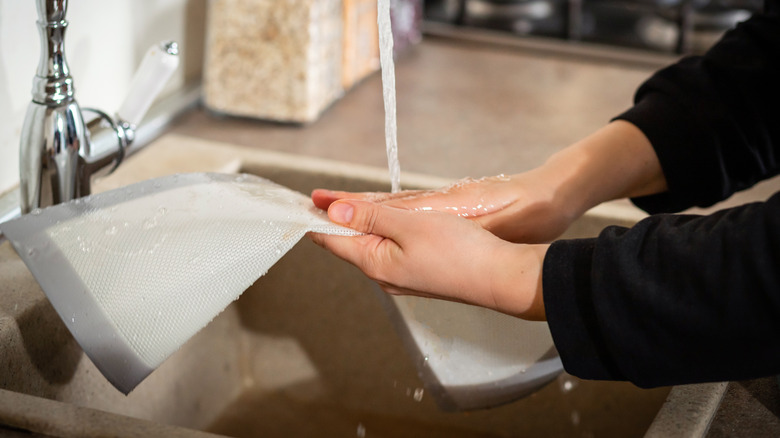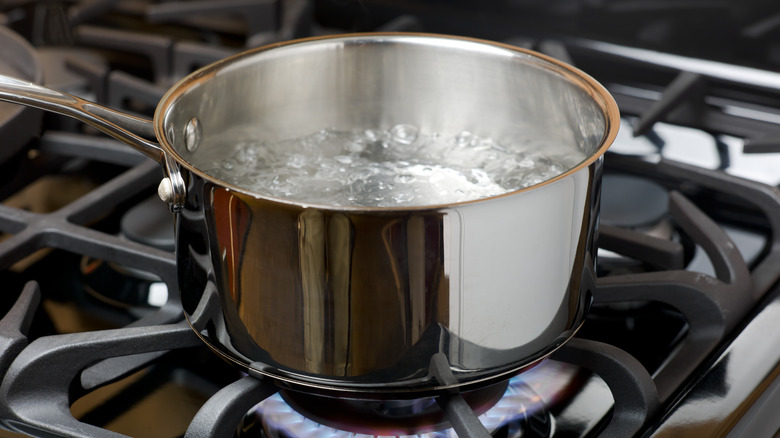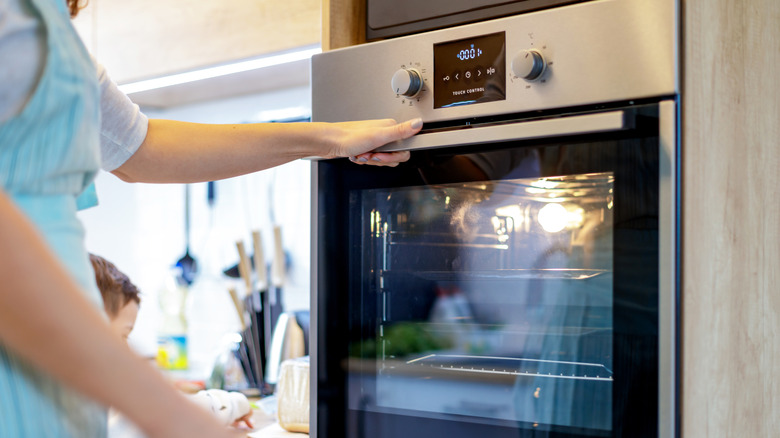How To Treat Your Moldy Silicone Kitchenware So You Don't Have To Throw It Out
Many kitchen items, from utensils like spatulas to baking must-haves such as cupcake liners, are made out of silicone. The main benefits of this material are that it is flexible, non-stick, and can withstand high temperatures. However, over time, this kitchenware can get visibly moldy or start to have a bad scent. There are several ways to clean mold off of silicone items when this happens, all of which require cleaning agents you probably already have like baking soda and vinegar. To remove the mold, you could try spraying the object with vinegar, soaking it in boiling water, or heating it in the oven.
Because of the nature of silicone, it's more difficult to keep clean, but these solutions will both scrub off the mold and get rid of any smell. Though you can put most kitchenware items in the dishwasher, mold often needs to be cleaned off manually. The unsightly substance can occur for several reasons but most commonly happens when you haven't dried a clean item properly or have left a dirty item in the sink for too long before washing it. Luckily, any mold damage is reversible, meaning you can continue reusing the silicone kitchenware you already own rather than needing to buy anything new.
Try these mold-removing methods first
The best way to clean silicone and make your kitchenware look new is with boiling water. Simply fill a large pot with water, place it on the stove, and put the moldy items inside. Leave them to soak for about 10 minutes, or a bit longer if the mold is particularly bad. After the time is up, if you find that the mold is able to be scraped off but the smell still lingers, try soaking the items in boiling water again but with a small amount of baking soda added as well.
Another common mold-removing method is to use vinegar. Make a solution of one part vinegar and three parts water and spray it on the affected sections. Let this solution sink in for 10 minutes and then completely wipe it off. Then, follow up with the boiling water method to remove any traces of the vinegar smell. Alternatively, if you're dealing with black mold, grab some pure distilled white vinegar and spray it all over the silicone items. Wait for a few hours and then scrub until all traces of mold are gone. You might need to scrub quite hard if the mold has set in to really target the smell.
What to try if the mold isn't budging
If the above methods don't work, it's time to try stronger measures. You can use bleach, but be advised that using undiluted bleach or too much of it could damage the silicone and cause it to deteriorate faster. It's important that you wear gloves when handling bleach due to it being a highly-irritable substance. Mix 2 tablespoons of bleach into 2 cups of water and soak the items in the mixture for a day, then wash it off. Once the mold has been removed, clean the items with soapy water or put them in the dishwasher to ensure no bleach remains in the cracks and crevices.
Want to avoid bleach? Try dry heating the items instead. This is a good option if you find a smell or any discoloration remains after cleaning. Preheat your oven to 350 degrees Fahrenheit and bake the silicone items for 10 minutes or so. This level of heat should kill any lingering bacteria. Overall, the above methods are ideal for when you notice your kitchenware is looking a little funky, but remember to always thoroughly dry anything made of silicone so you don't have to remove mold too often.


